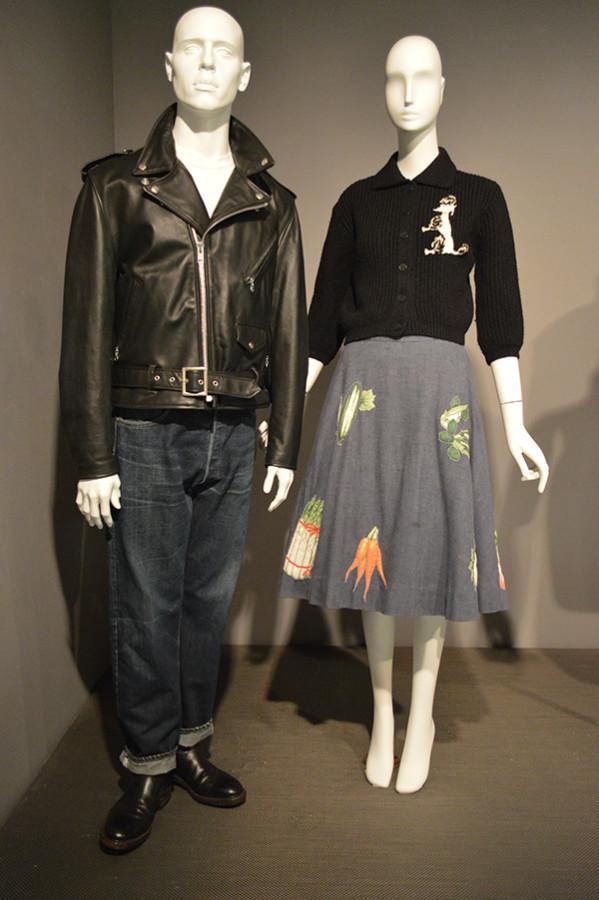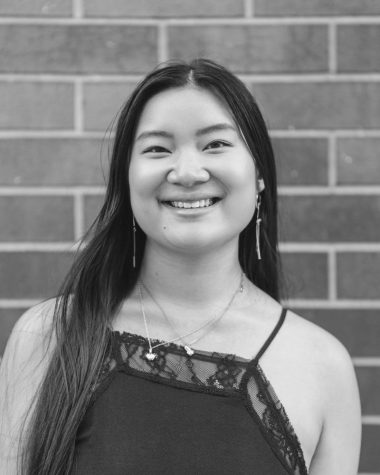FIT reveals culture of denim
“Denim: Fashion’s Frontier” is on display through May 27, and features the fabric’s transformation through the centuries.
December 2, 2015
Ripped, bleached, tailored, high-waisted, low-slung, bootcut, embroidered, acid-washed: denim. This prolific textile has been worn throughout the past two centuries and serves as the centerpiece of the Museum at the Fashion Institute of Technology’s newest exhibit. On view through May 27, “Denim: Fashion’s Frontier” displays the fabric from its humble beginnings as work-wear during the 19th century California gold rush to the sex symbol Calvin Klein made it in the 1990s to its appearance on runways today.
Assembled by Emma McClendon, the assistant curator of costume at the Museum at FIT, the exhibit shows both men’s and women’s denim garments throughout the ages, displayed on rows of mannequins. At the front of the gallery, a video of the denim manufacturing process gives the viewer a visual background on what goes into the creation of the popular material. Additional historical context and information about the textile is available as a timeline on several tablets. Plenty of detail about the aesthetics of denim throughout history is available, but the exhibit lacks the social commentary that accompanies the trends.
The first garment on view, a pair of Levi Strauss & Co. 501 style jeans, sets the stage for the rest of the exhibit by providing a familiar icon. When you think denim, you think jeans. The jeans embody denim in its most practical and authentic form, and this particular Levi’s 501 cut became the template for the five pocket, riveted jeans still preferred today.
From there, the exhibit features denim and its trending style through each decade with a women’s playsuit from the ’30s, an embroidered poodle skirt from the ’50s and a patchwork-covered bootcut pair from the ’60s. As jeans move mainstream in the ’70s and ’80s, they become tighter until designer denim became a status symbol. A loop of the iconic and controversial 1980s Calvin Klein Jeans commercial featuring Brooke Shields plays alongside the vintage ensembles.
The specifically high fashion forms of denim on view included a rose embroidered skirt and jacket ensemble by Roberto Cavalli, a black and white denim gown by EDUN and a Fendi handbag composed of gray-washed denim with sequins and embroidery. These decorative applications of denim catch the eye, but show how even a versatile textile can become stylistically outdated. The reimagining of denim each year shows its flexibility and staying power in the creative process.
Steinhardt freshman Vivian Song, noted a particular denim blazer hand-painted with a citrus green Keith Haring-esque design caught her eye.
“Blazers are usually pieces worn to appear more formal, and denim is a material associated with a casual and laid-back vibe,” Song said. “Seeing a dressed-up piece in denim shows how it is versatile, and the pop of color is nice, too.”
“Denim: Fashion’s Frontier” appropriately shows the adaptability of denim. The exhibit, like the fashion installations at the Metropolitan Museum of Art, conveys the history of an important facet of fashion.




























































































































































